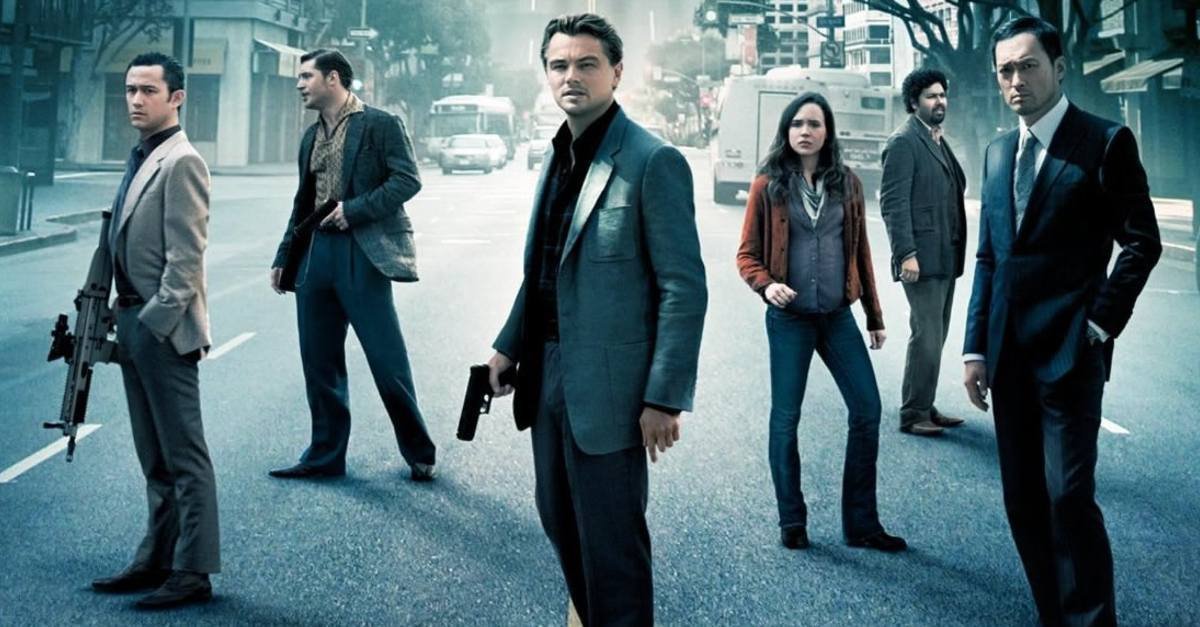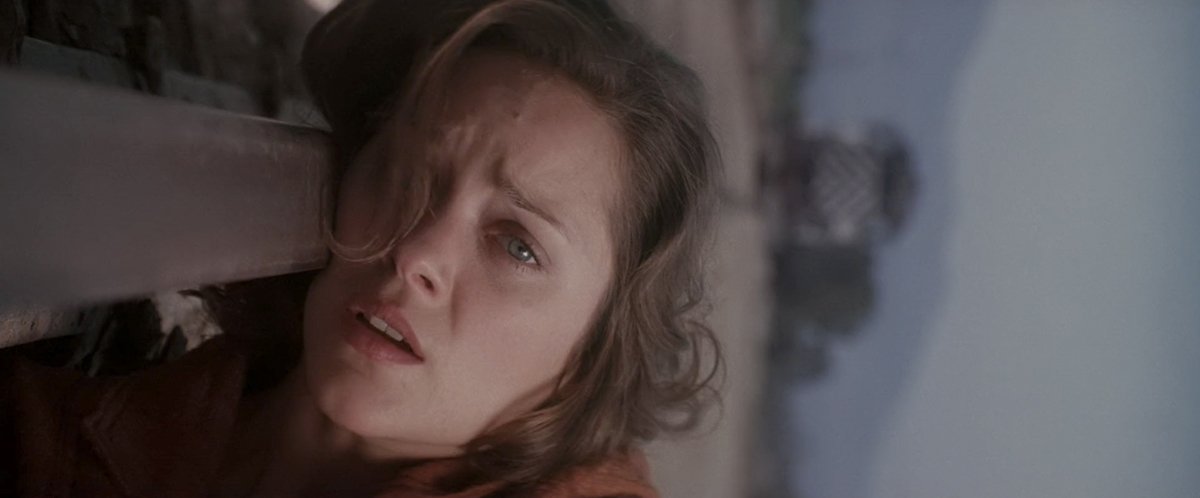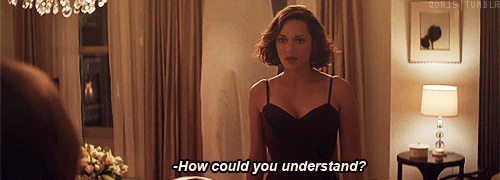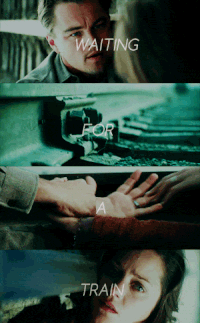
*

Do you remember a past post where I talked about the clothes in Inception, and how that gave away clues and insights of the story's subtext? Well, this is the second part or layer, where I will explain colour and how they used it to transmit subthemed messages. If you have not read part 1, here it is:
Inception: Fashion Analysis | Layer 1
Movie: Inception
Limitation points: Reality vs Dream
Chosen segment: Ariadne (the architect) enters Cobb's dream without his permission and looks at the memories about his family.
Scene duration: 54:14 – 1:00:45 (6 min, 31 sec).
Chosen layer: Colour
Colorization in Inception

At first, when Ariadne discovers Cobb connected to the machine and sleeping, you can see a range of colours like pale blue, light gray and variations of bluish grays. Gray symbolizes stability and peace and blue is truth and freedom, however, in excess it can mean depression, affliction or sorrow, and during the whole movie you can spot these same colours. It's about playing with the viewer. Taking you to a false state of calm and peace, when deep down you know something isn't quite right, you just can't put your finger on it.
The same goes for the scenes where there are light and bright grays and blues: the beach (where the children are playing with his wife and all was well) and the train (when he convinces her to die in order to wake up and they do it together). The blue tones consequently represent the fine line between sanity and madness, and when you don't know what's real and what's a dream, you must know how to tread that line carefully.

*


When Ariadne gets on the elevator, she's immersed in black, you can't see beyond the gate, everything is darkness except when the different levels go by. Black represents silence, mystery and intimidation. Maybe that's what Cobb feels when he repeatedly enters his dream, intimidation by all those memories he wishes he could change but can't, so he visits them again and again. Black is power, that feeling gets ahold of him and won't leave him alone. Black envelops Ariadne because she doesn't know what she will find outside this elevator, it's a mystery, so darkness surrounds her. Nevertheless, we can see that when she listens to the couple's conversation and Cobb gets in the elevator, it immediately gets brighter. You can now see that it's a grayish metal and in the back it has a faded gray wall. You can perfectly detail everything. This could be perceived as an enlightenment reached by Ariadne; she now knows what is in Cobb's dreams: Mal.

Warm or earth tones become predominant: ochre, brown, burnt red, beige, all colors that come from browwn. They show us the house where Mal kept her totem and the couple's current house, both with the same colour range of browns and beige. These seem to be the memories where he was at peace or happy, but he didn't know it at the time. Brown represents warmth and indicates a need for well-being, physically and emotionally. Maybe clothes varying from the brown scheme are more predominant because they want to transmit a sense of being uncomfortable with the environment, the non comfort that results from problems that Cobb couldn't solve, the remorse he feels for so many things (his wife's death and children's abandonment).
In the trashed hotel room everything is champagne, beige or light brown. This should mean the scene is happy, stable and projecting well-being, given that all other times we've seen this colour scheme Cobb has felt relatively happy. Nevertheless, Mal appears wearing a completely contrasting dress, dark wine coloured, the colour of blood, danger, fury and malice. This generates a dissonance: it should be a happy scene, but it's not? There is something wrong about to happen, and subconsciously everyone already knows it.

*

When Cobb sees his children for the last time in the dream, the colours are different tones of greens surrounded by a calming light. Green symbolizes nature, life and hope. The children are outside surrounded by green because they are the one thing driving Cobb to go back to reality and return to his family, instead of staying in an eternal dream with his wife to keep her alive.
To conclude both layers of my analysis, we can see how the simple coordination of a few colours and clothing variations can change the view one has of a movie, and how these things can subconsciously influence the human psyche. Did the director actively and purposely transmit everything that was perceived? We can't really be sure. But something that has always been taught to us is: in audiovisual arts, NOTHING is random.

*
.
.
.

- How to | COMPLETELY FIX your broken pressed powder
- Steemit Open Mic Week 78 | When I was your man - Bruno Mars (cover/female version)
- 🔥The FALLAS of Valencia: a spectacle that NOBODY can miss out on!💥🎵

- How to Paint a Loose Florals Wreath by @artbyadrian
- Got bored? Grab a Pen and Doodle it! by @ligarayk
- Past Away Sketchbook (Part 5) Last One by @midlet
Do you agree with my colour analysis? Do you have something else you can add to what I've written? Tell me in the comments!💬 I'd love to read them 😉


* Image sources:


